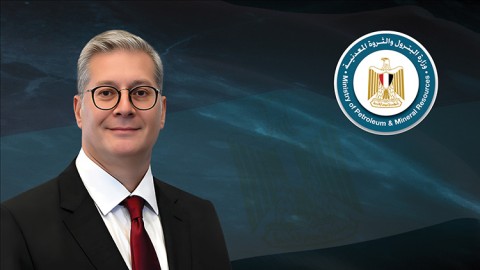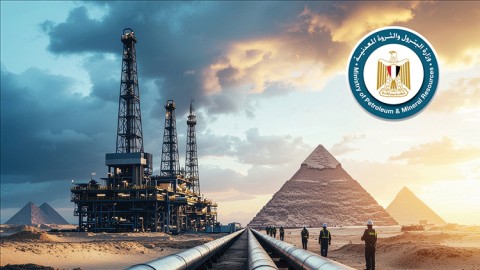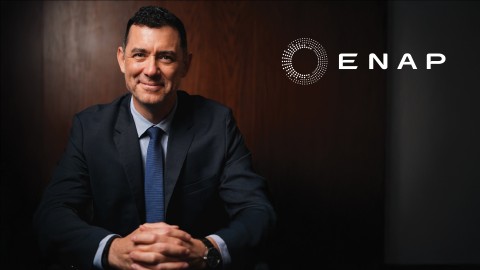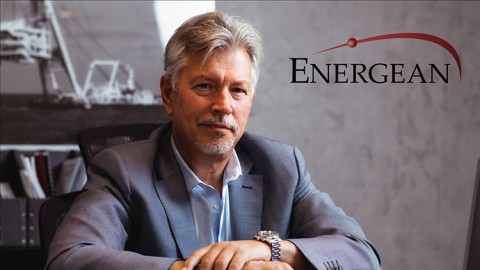Can you share any recent notable discoveries or developments in Cheiron’s exploration activities?
Probably the most notable discovery we have made this year was in the GNN-11 well, drilled by the PetroGulf Misr Joint Operating Company (JOC) near the Geisum GNN field in the Gulf of Suez (GoS). This well found approximately 165 feet of good quality pay in the Nubia, which was the first time this interval has been found to be oil bearing in the GNN area of the concession.
Another recent exploration success in the GoS was with Amapetco in the Amal-25 exploration well, which was drilled outside the main field area into a downthrown fault block and encountered around 110 feet of virgin pay in the Kareem formation. We have also drilled important discovery wells in the Western Desert with Bapetco, into downthrown fault blocks north of the BED 15/16 field areas, and had other finds with Norpetco in the North Bahariya areas.
All the abovementioned wells have already been tied back onto production, using existing infrastructure, and follow on appraisal drilling is either already underway or being planned.
What are some of the key initiatives or projects that Cheiron is currently working on to enhance production or increase reserves?
We have a number of projects running at the moment which have helped us maintain our position as the fourth largest producer in the country.
In the GoS, earlier this year we installed early production facilities on the GNN field comprising a conductor support structure and a mobile production and offtake unit, tied back to one of the existing Geisum field platforms. With this in place, we are currently drilling the tenth of our exploration and development wells on the field which have increased the Geisum area production from around 4,000 bopd to 23,000 bopd.
Elsewhere in the GoS, we also plan to continue to drill infill wells on the Zaafarana and Amal fields, where recent drilling results and new reservoir studies have identified further potential.
In the Western Desert, we are maintaining a very active drilling program in the Bapetco and North Bahriya fields, where we have a total of 6 drilling rigs and 8 workover rigs running. Our main focus in the Western Desert remains the optimization of our waterflood programs.
How does Cheiron plan to balance its portfolio in response to changing market dynamics and emerging energy transition trends?
We are fortunate to have a well-balanced and diversified portfolio as it stands and does not see a driving need to make any material changes. Our reserves base is approximately 50% gas and 50% oil and we are comfortable that this will allow us to deliver our sustainability and energy transition plans whilst still benefitting in the short to medium term from strong oil prices. We would like to see Cheiron playing a significant long-term role in providing energy for Egypt as part of the country’s overall energy transition plan.
Can you discuss any new partnerships or collaborations that Cheiron has recently established to support its growth plans or decarbonization efforts?
Cheiron is always looking for new ways to collaborate on upstream opportunities and we have strong established relationships with the Ministry of Petroleum, EGPC, EGAS, and Ganope, and our industry partners including Kufpec, Capricorn, Apache, Wintershall Dea, NPIC, Neptune, INA, GPC. and NPC.
More recently we have been expanding or forming new relationships to push forward our various decarbonization initiatives with companies such as Schlumberger and HiiROC. Schlumberger has recently completed a Carbon Capture and Storage study on behalf of Bapetco, Cheiron and our partner, Capricorn, to identify ways to dispose of vented CO2 volumes from the BED and Obaiyed facilities and we are now looking at the practical application of the study findings. HiiROC has some interesting plasma electrolysis technology that can convert flare gas to two products, hydrogen and black carbon, and we are planning some “proof of concept” field tests with them in the near future.
How does Cheiron incorporate sustainability practices into its operations, and what steps are being taken to minimize environmental footprints throughout the value chain?
Similar to our peers, Cheiron has an established Sustainability Policy and Plan which covers many areas including community welfare, socio-economic development, biodiversity management, water and waste management and respect for cultural heritage.
Also, as a fundamental part of this framework, we have set clear targets to address climate change that are consistent with the Ministry’s and Egyptian Government’s objectives and industry norms. These include reducing our GHG emissions intensity by 25% by 2025, eliminating all routine flaring by 2030 and moving to net zero by 2050.
These objectives are being pursued through a variety of short, medium and long-term initiatives ranging from replacing diesel fuel with gas across our JOCs, power centralization and electrification projects, flare reduction/elimination projects, and waste heat recovery, renewables energy and carbon capture and storage studies.
Can you provide insights into any upcoming exploration or development plans for Cheiron?
In the near term, we plan to continue our drilling campaign in and around the GNN field where we have identified a number of infill well locations and further near field exploration opportunities. This is likely to involve the addition of some new well slots to the early production facilities.
We also expect to continue our drilling programs in the Western Desert in Bapetco and Norpetco. These are strategically important field areas and produce, on a combined basis, around 50,000 bpd of oil and condensate for the country.
For the future, our next major production uplift should come from the 150 mmcfpd West El Burullus (WEB) gas field development in the Mediterranean which was sanctioned for development early this year. The development comprises 2 platform and 7 wells tied back to the Burullus WDDM plant, and will come on stream in the second half of 2024. We are excited by this project since we recently acquired new exploration acreage close to the WEB development lease and will be drilling one or more prospects near the existing fields early next year.
What are Cheiron’s main focus areas for enhancing mature fields’ performance and adding reserves?
The area where we see good potential for short term production and reserves uplifts is through the optimization of our Western Desert waterflood programs. Historically, we have had significant success implementing an inverted 5 spot water flood pattern in Norpetco’s Abrar field and increasing the water injection rates, and we are looking to see whether this success can be replicated in other fields. In particular, some of the Bapetco fields appear to have some remaining potential for optimization and these are under active study.
Also, we know that there is a significant tight gas and unconventional oil and gas resource base in the Western Desert which may be unlocked with extended reach horizontal drilling and multifrac technologies, and both of these technologies continue to advance at pace.
Other than these major themes, effective mature field management in our assets involves making many continual improvements in many areas including completion design, drilling efficiencies, downhole pump efficiencies, scale and chemical treatments and system debottlenecking, to name but a few.
How does Cheiron prioritize safety and risk management in its operations, and what measures are in place to protect the health and well-being of employees, contractors, and local communities?
Cheiron and all our Joint Operating Companies maintain a very strong focus on safety.
As you would expect, at a corporate level our Board takes a serious interest in all safety matters and ensures that we have appropriate HSES Management policies and systems in place.
Most importantly, Cheiron endeavors to work collaboratively with our JOCs to help develop and implement their Annual HSE Plans and provide support through the secondment of qualified safety professionals and directly from our central team when required.
We also regularly use 3rd Party auditors since we feel they can bring fresh eyes and fresh solutions to address safety issues and sometimes identify areas for improvement overlooked due to familiarity. We also work with our JOCs to bring in external trainers to conduct key initiatives such as our Behaviour Based Safety training schemes when we do not have the capability in-house.
EGPC provides invaluable support to underpin our work and has introduced some excellent international safety standards and processes into Egypt over the past several years. We are pleased to help promulgate these through the JOCs.








